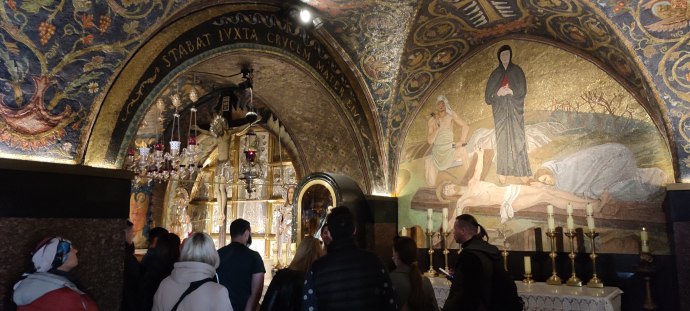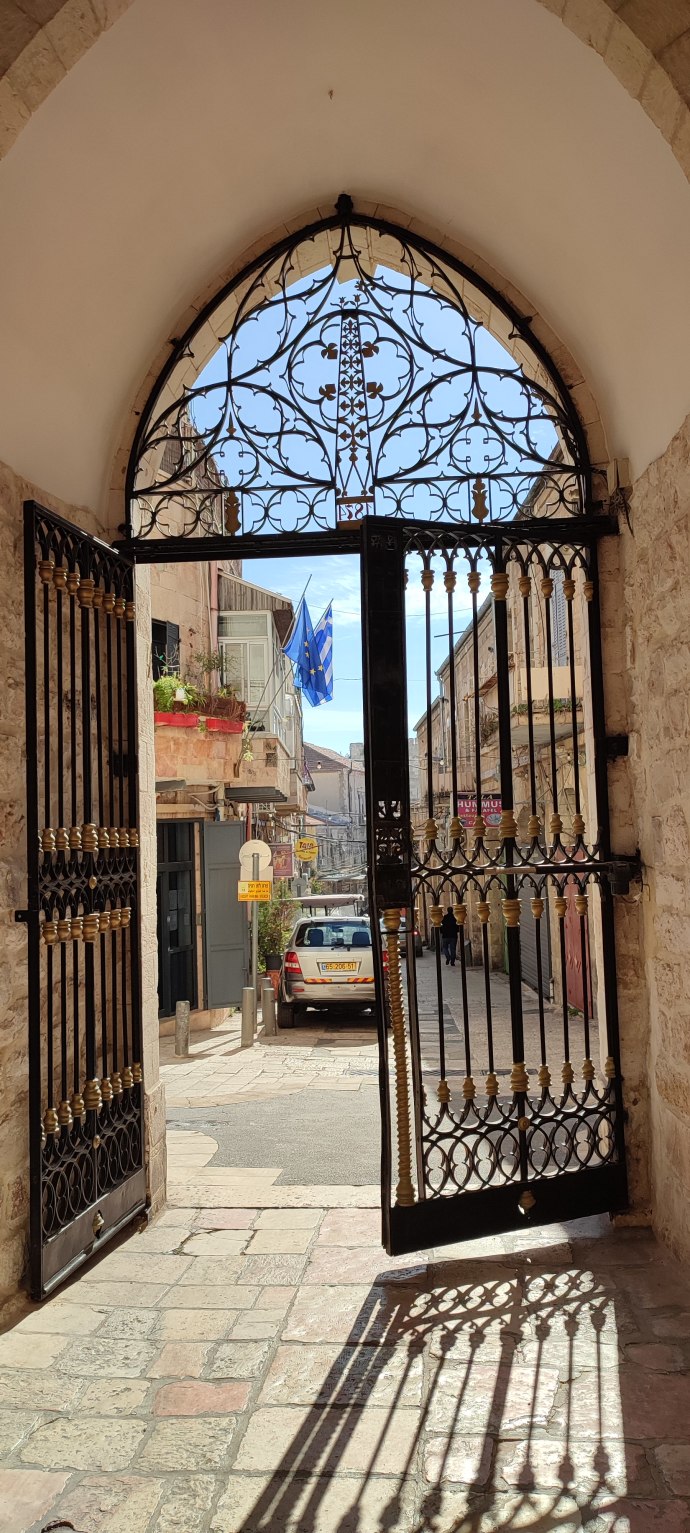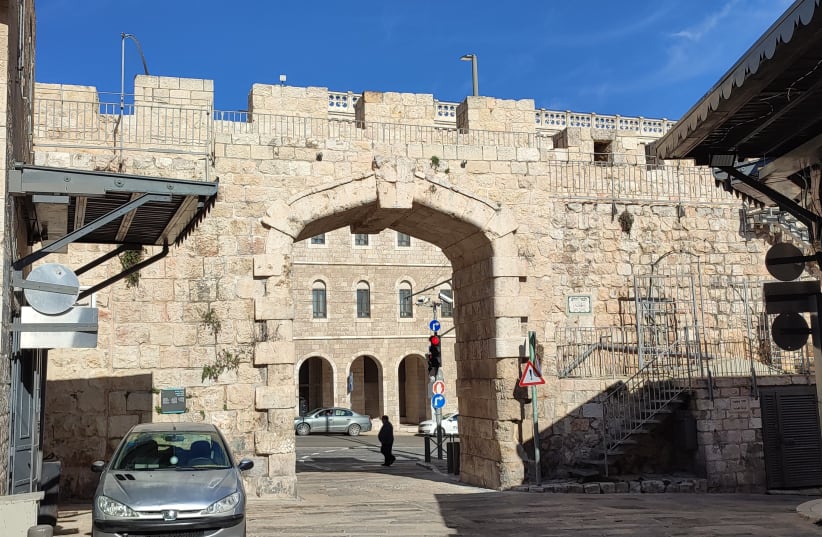As tourism gradually returns to the Holy Land, Israeli tour guide David Ha'ivri wants to open up the Christian Quarter of Jerusalem to as many people as he can.
Ha’ivri has been spending a lot of time in the Old City in recent months.
“I’m personally fascinated by it,” he said. “The Old City is so beautiful and has so many layers of history. And many of the layers are still in use today by the public.”
Ha’ivri finds it a bit ironic that, “the iconic image of Jerusalem is the Ottoman walls that were built only 500 years ago,” since the roads in the Old City are an extension of “the grid that was built by the Romans in the year 135 CE.”
Tourists and locals who walk through the Old City are “walking on paths that were drawn out by the Romans 2,000 years ago,” he noted.
Besides the ancient walkways, the Old City is filled with “magnificent buildings that were built 800 years ago. All that is very fascinating,” he said.
Four Quarters
The Old City of Jerusalem is divided into four quarters: The Jewish quarter, the Muslim Quarter, the Armenian Quarter and the Christian Quarter.
It is the Christian Quarter that has captivated Ha’ivri, who explained that he is, “an observant Jewish person in my personal life and an anthropologist and tour guide in my professional life.”


”The Church of the Holy Sepulchre is the most important site for all Christians except for Protestants,” he explained.
That’s the location, according to tradition, that is the site of the crucifixion, burial and resurrection.
In normal times, lines to see specific rooms inside the Church of the Holy Sepulchre can be very long and tourists can wait for hours. Now, visiting the site is pretty quick.
Why not for the Protestants?
Toward the end of the 19th century, Protestants identified the Garden Tomb, which is in the American Colony, just north of the Old City’s Damascus Gate, as the place where they believe the crucifixion, burial and resurrection happened.
Another important site is Christ Church, found just inside the Jaffa Gate, across from the entrance to the Tower of David Museum. Christ Church, he explained, is part of the Anglican compound that was established in the mid-19th century.
Ha’ivri shared that the church was first established explicitly to missionize the Jews, as this location was the closest, they could get to the Jewish Quarter. The church initially served as part of the London Society for Promoting Christianity Amongst the Jews. It was built by Bishop Michael Solomon Alexander who was the first Anglican Bishop in Jerusalem. Alexander was an apostate German Jew who was raised in an Orthodox home.
Nearby Christ Church is the Conrad Schick Museum, which was built by German archeologist, architect and missionary Conrad Schick. This small museum includes models of the Temple Mount at different times in history.
Many different Christian denominations live in the Christian Quarter, including the Franciscan monks, the Greek Orthodox, the Roman Orthodox, the Armenians and others. Ha’ivri shared that there are even Muslims living in the Christian Quarter, as well as mosques to serve them.
Although the Crimean War in the mid-19th century broke out because of a fight between Catholic and Russian monks in the Church of the Holy Sepulchre, the area is relatively quiet. Nevertheless, there are perpetual tensions over holy places.
“There are three separate institutions of the Vatican in the Old City. The Franciscan Monastery in Jerusalem, the Latin Patriarch and the Pontifical Mission to the Holy Land all serve under the Pope, and there is some competition among them,” Ha’ivri said.


He emphasized that anyone who visits the Christian Quarter will be exposed to things that are not part of their religious beliefs, whether or not they are Christian.
For example, people from Western countries might not even be aware of Eastern Christians and the fact that their churches “look different, smell different, their ornaments are different and their clergy are different” from Western churches.
The Copts, the Armenians, the Ethiopian Christians are all different from each other,” he said.
Walking through the New Gate
Ha’ivri believes that the Christian Quarter is underappreciated because the entrance to it is through an unfamiliar gate.
“A lot of the Christian Quarter is off the beaten track,” he said. “The Old City is very close to the center of town and places that people are comfortable reaching on their own. Anyone can walk from City Hall to the [Jewish Quarter through the] Jaffa Gate. It’s very clear, open and inviting.”
Entrance to the Christian Quarter is through the New Gate, just around the corner from the Jaffa Gate, but to many, Ha’ivri said, “it’s beyond the dark mountain.”
The Jerusalem Municipality has recently added new cultural activities, such as cafes and concerts, inside the New Gate to encourage more traffic.
It is also working to make as much of the Old City as accessible as possible to people with disabilities, including people in wheelchairs, although some roads with steps are not accessible. Ha’ivri also pointed out that the Jerusalem municipality maintains clean public restrooms throughout the Old City.
The Christian Quarter includes a coffee shop, an Armenian ceramics shop, grocery stores and barber shops.
“There are plenty of opportunities to buy souvenirs,” he said. “People can get a map and walk around [the Christian Quarter]. There’s no reason to be afraid. Just be careful not to get lost.”
